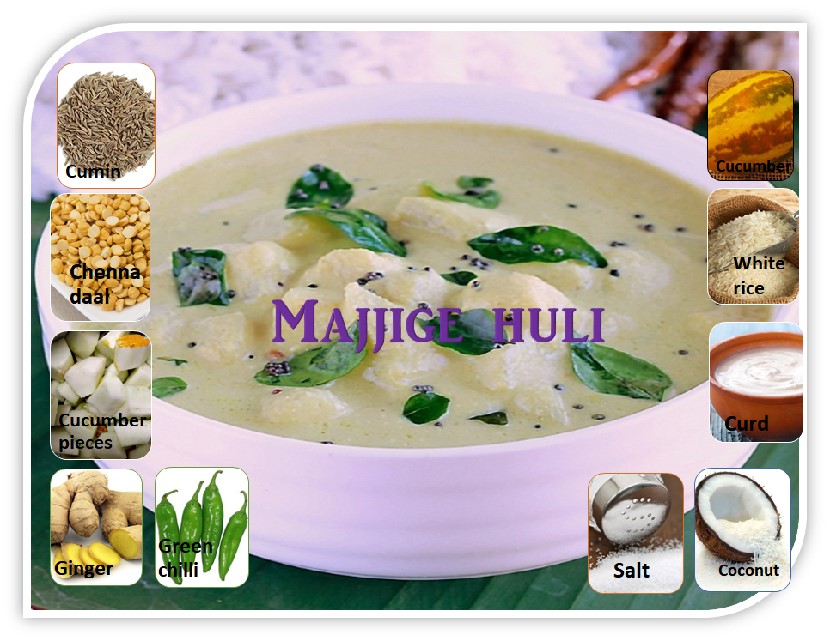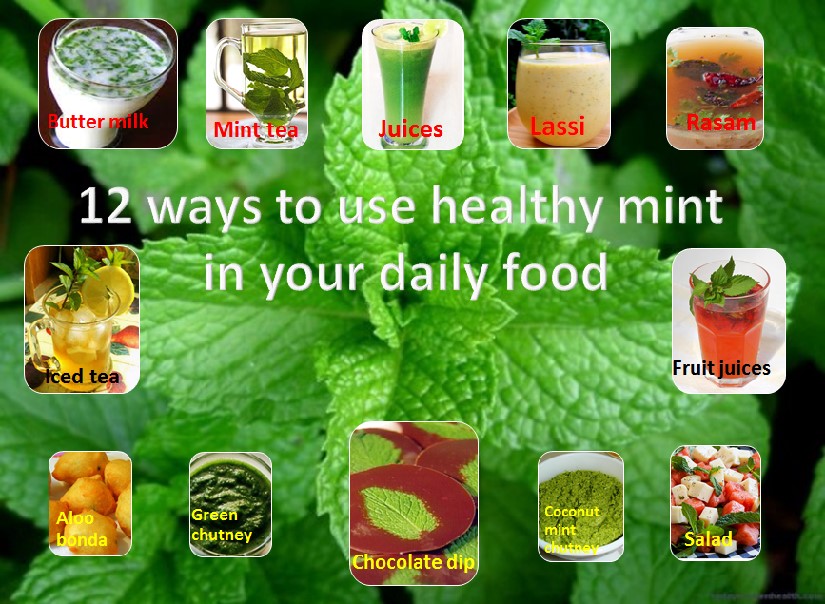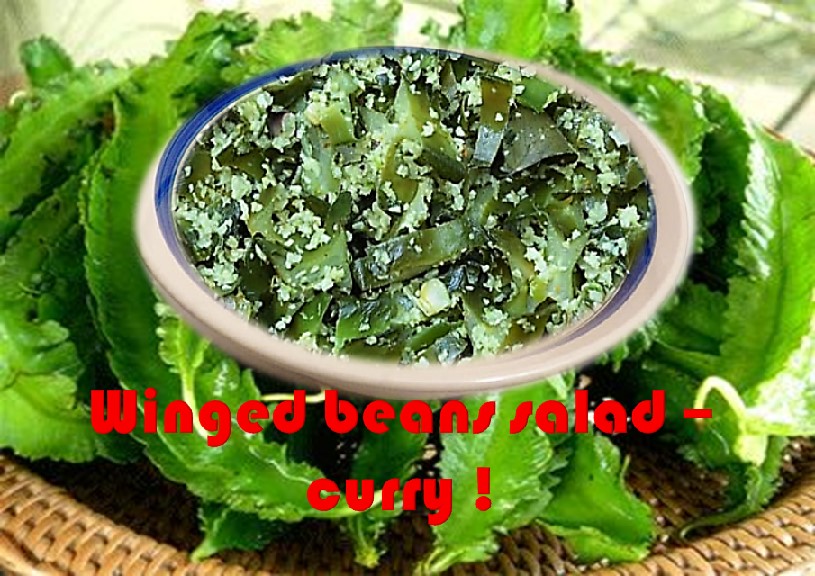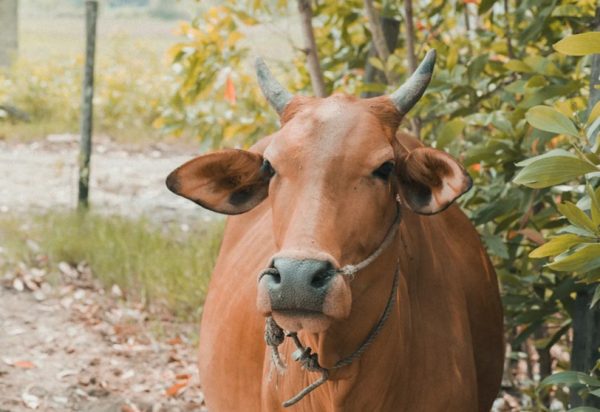
Majjige Huli – A tasty traditional dish
Majjige huli or Mor kuzhambu / majjige pulusu is a popular, tasty and traditional dish of Karnataka, India. Vegetables of Cucumber family (cucurbitaceae) are used for this dish. Particularly, cucumber, ash gourd, chayote, ivy gourd can be used to prepare this dish that needs thick buttermilk or curd/yogurt.
Majjige huli can also be prepared using other vegetables like okra, drum stick, palak leaves, spinach, broccoli
Here is an example of majjige huli recipe using dose kai or colored skin cucumber.
Ingredients:
- Cucumber: One medium size
- Shredded coconut – ½ cup
- Cumin seeds – 1 tsp
- Ginger – 1 inch
- Channa daal (soaked) – 1 Tbs
- White rice (soaked) – 1 tsp
- Green chillies -3 to 4
- Curd/yogurt /thick buttermilk– 1.5 cup
- Oil – 2 tsp
- Asafetida – a pinch
- Salt – as per your taste
- Mustard seeds – for seasoning
- Curry leaves – 1 string for seasoning
- Red chilli – 2 pieces for seasoning
- Water -1.5 to 2 cups water
Method:
- Soak chenna daal and white rice for an hour
- Remove cucumber skin, cut cucumber into 1.5 inch pieces. Taste a small piece to ensure it is not bitter.
- In a deep vessel put little oil, heat and add cucumber pieces followed by a cup of water. Cook cucumber.
- Meanwhile, grind – shredded coconut, soaked rice and chenna daal, ginger, cumin, green chillies to a paste.
- Add grinded ingredient mix to cucumber followed by little more water. Add salt. Allow it to boil on medium heat. After one or 2 boils turn of the heat.
- In a bowl take yogurt and beat it, so that there is not clump. Add this to cooked cucumber mix.
- In a ladle prepare seasoning with mustard, curry leaves, asafetida and red chilli, add seasoning to majjige huli
- If you prefer heat majjige huli one more time on low heat. Make sure yogurt/buttermilk is not breaking.
- Majjige huli is ready and serve with rice, chapatti, lemon rice, tamarind rice, akki rotti etc.
- Some prefer adding little turmeric with seasoning, which gives majjige huli light yellow color.
Author: HealthyLife | Posted on: July 17, 2017








